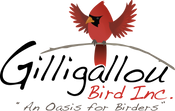Unmistakably yellow during the summer months, one of our most beloved songbirds has to be the American Goldfinch. Going well beyond the striking plumage of this little bird, it is their truly nuanced being that really is magnetic.
In addition to their calming song, these birds are often the topic of conversation either online or in our store. Given their unmistakable plumage during the summer months, birders of all walks of life will immediately notice their disappearance and come looking to us for the answers.
It is here in which the answer to today’s question lies and what truly dictates just about everything this little bird does: food.
At a time of summer when most birds are wrapping up their nesting season or in some cases, even beginning to migrate, our American Goldfinches are just beginning the nesting process. As one of the last songbirds to breed each and every summer, their eggs are not often laid until the end of August in the majority of cases, sometimes even later.
As our kids head back to school this month, so too are our yards and feeders filled with the last fledglings we will see this calendar year. Our feeders in particular, have been crowded and a great spot to see juveniles filling up on our seed as they cautiously learn to spread their wings.
As we stated above, this has every bit to do with food availability. Without the ability to feed their young insects (they are vegetarians!), American Goldfinch patiently wait for thistle plants to mature where they will both utilize its seed to feed their young and prior to that, its fibrous materials to line their nests.
In addition to the thistle plant, these birds rely heavily on other native plants and grasses to thrive including milkweed to ensure that their young will be born at a time when plentiful food sources will be available.
In this relationship, both the female and males have an active part in both the nesting process as the male will select the location while the female builds the nest. Additionally, the male will continue to feed the female while she remains on the nest incubating eggs for a mere 12-14 days.
Following that, young will remain in the nest for roughly the same period of time before fledging where they almost immediately will join adults at nearby feeders.


Comments (0)